You could call a bioactive substrate the holy grail of terrarium and vivarium soil.
Truly, the foundation of a self-sustaining terrarium. It has all the hallmarks of an effective tropical plant substrate and it supports the needs of your bioactive helpers.
As a harmonious blend of nourishing organic materials and fibrous elements, it can keep all of your plants, springtails, isopods, and beneficial bacteria/fungi happy and healthy.
Perhaps most importantly – when properly balanced, it renews itself.
So, in this guide, we’re going to break down all of the important elements and provide you with an easy DIY bioactive substrate recipe.
Let’s spill the dirt! (Metaphorically).

Terrarium Tribe is reader-supported. When you purchase through links on our site, we may earn an affiliate commission (at no further cost to you). 💜
What is Bioactive Substrate?
A bioactive substrate is a growth medium that’s able to support all the plants, microfauna, and microflora necessary for a functional ecosystem.
There are a few angles (and technical words) to consider here, so let’s break it down.
To be truly self-sustaining, a terrarium ecosystem needs to be able to use decomposing organic matter to drive a nutrient cycle. Just like in nature.
Plant and animal waste gets converted back into food for the plants.
But it doesn’t happen by magic! There’s a network of microfauna (tiny critters like isopods and springtails) and microflora (bacteria and fungi) working together to drive the process.
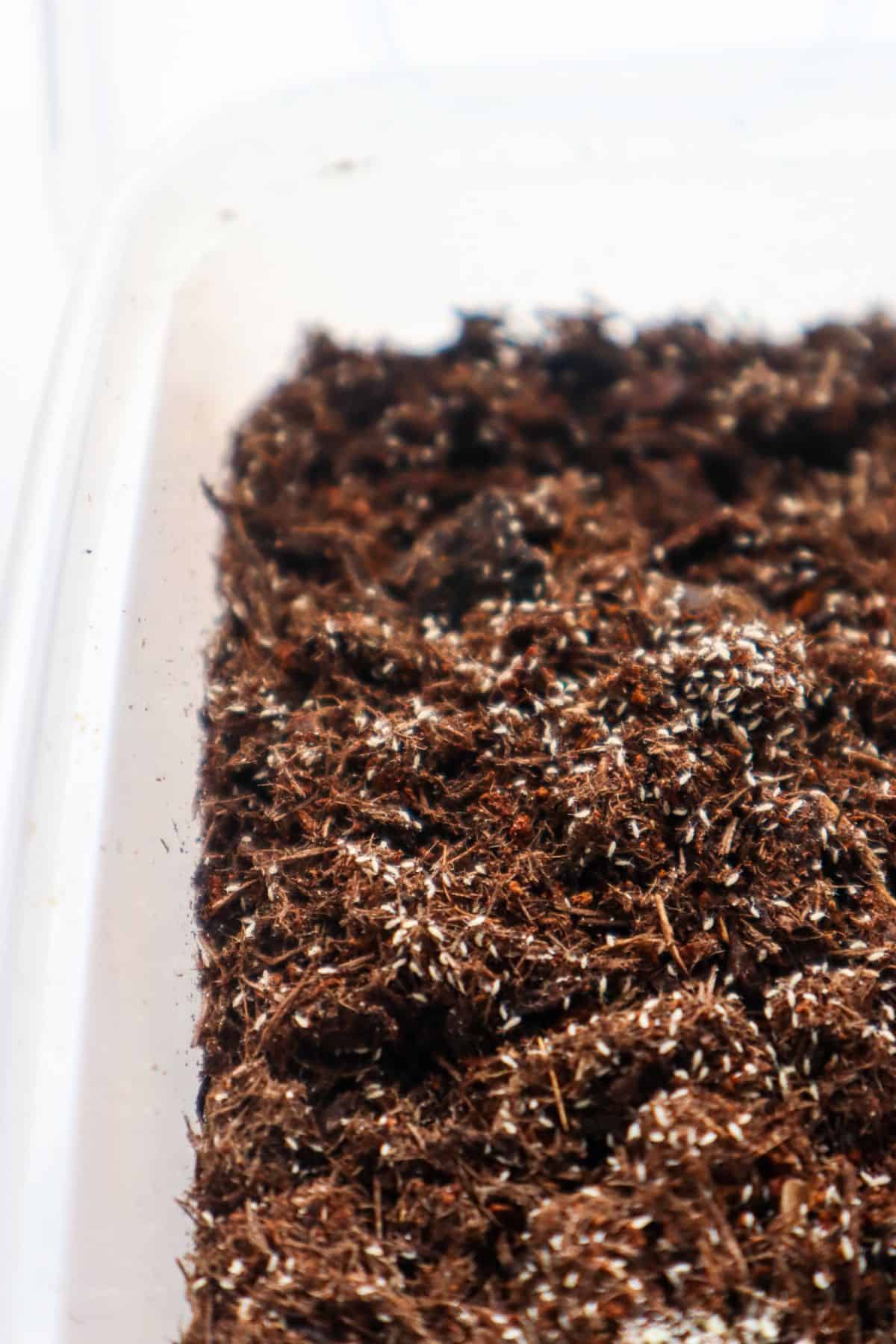
The isopods and springtails make up your cleanup crew. They’ll eat mold and decomposing waste, turning it into natural fertilizer for your plants.
Their burrowing activities can help to aerate the substrate, too – so they’re a double-whammy of benefits.
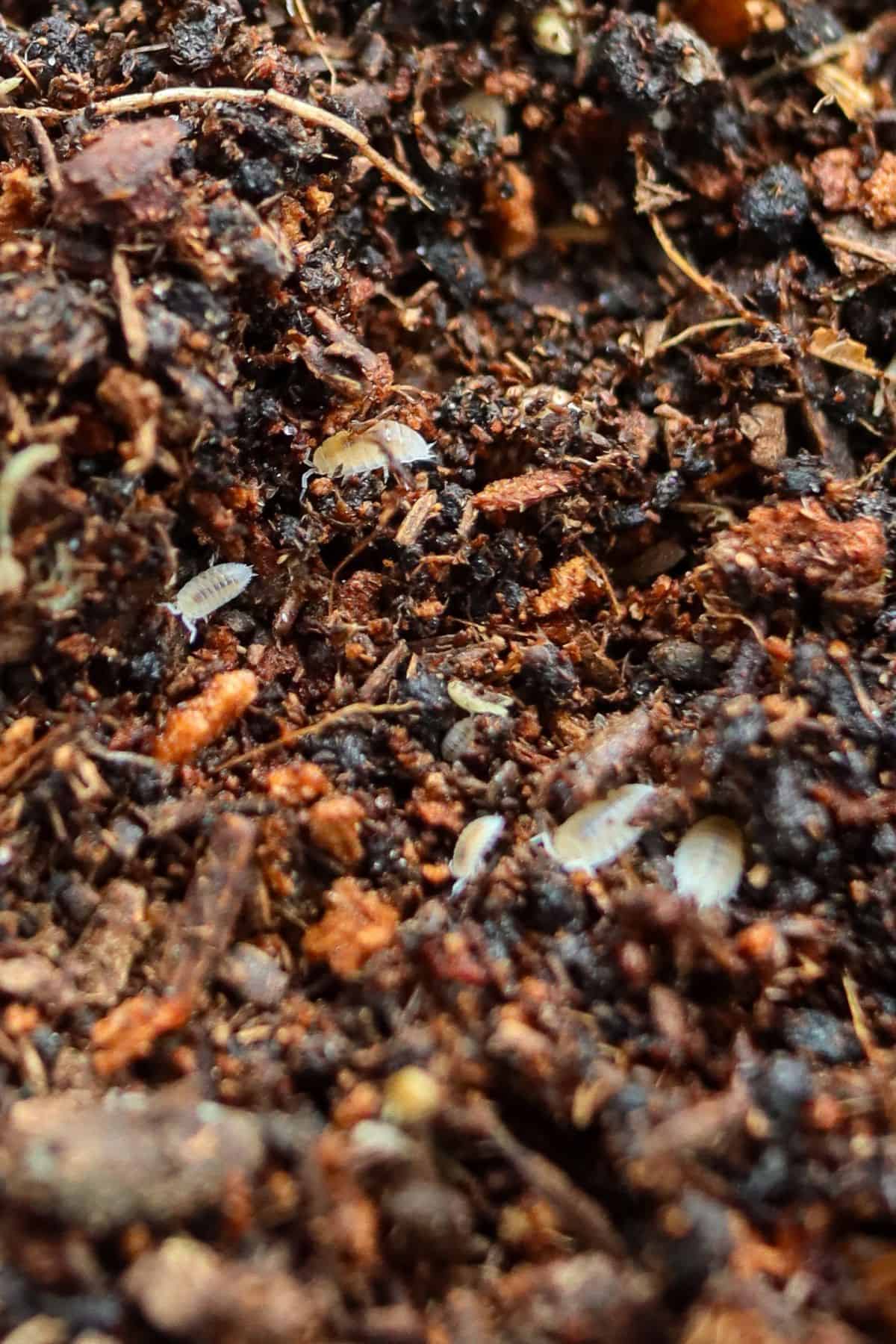
You can also employ a range of beneficial microorganisms, from bacteria to mycorrhizal fungi. These colonies are seeded directly into the substrate (it’s usually as easy as sprinkling a powder of sorts), and they bring a host of benefits from root health to nutrient availability.
Vivariums can take it to another level by adding animals into the mix (e.g., lizards and frogs). Which makes things a fair bit more complicated, but at least you mostly just have to feed the pets and not the isopods.
They’ll feed on… well, let’s just say the animals will take care of that themselves.
Onto the mix!
How to Make a Bioactive Substrate
Going bioactive will vastly improve the health and diversity of your terrarium/vivarium.
However, it’s essential that we get the balance right.
After all, a bioactive substrate blend needs to do all the great stuff of a typical plant substrate, and it needs to meet the needs of our tiny biological workforce.
Here, you’ll learn how to build a strong and healthy foundation for your plants (and animals), what ingredients you’ll need, and how to put it all together.
👉 Don’t want to make your own? Check out our custom-blended bioactive substrate mix.

Premium Terrarium Substrate Mix
Our carefully crafted blend that balances all of your plants’ needs.
Available on the Terrarium Tribe Store.
Choosing a Base
You’ll need a base with excellent water retention.
For tropical plants, that’s a given – but in a bioactive setup, your isopods might need it even more.
Isopods need consistent moisture. So, the base of the substrate must be able to hold moisture that they can easily access (ideally throughout the top layer where they spend their time).
Check out my isopod substrate guide for more help.
I use coco coir as the base in all of my tropical substrate blends, and it remains my choice for bioactive setups, too. It’s able to hold lots of water, and it lasts a long time without degrading.
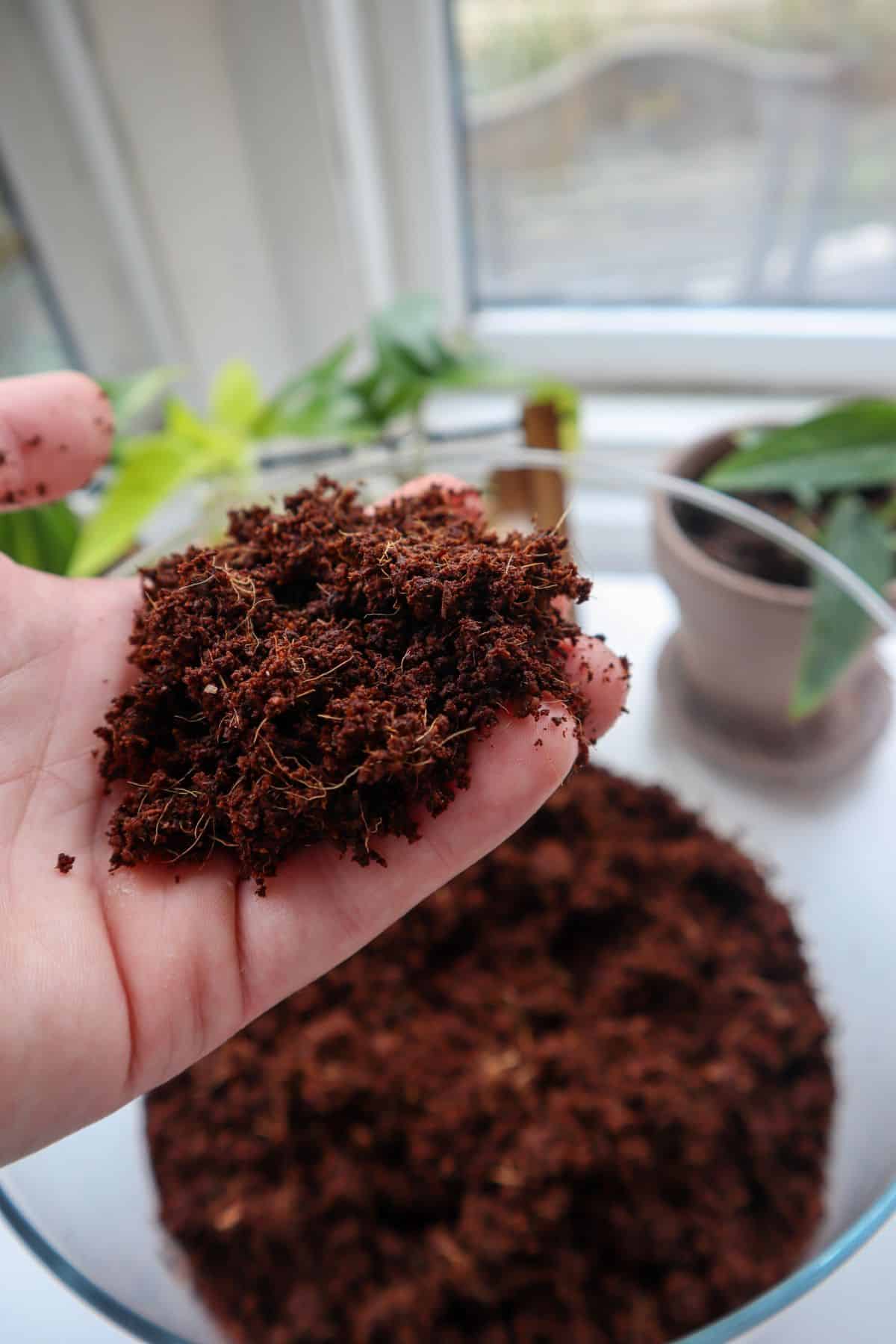
Sphagnum moss always helps a lot here too.
Supplements
Just like any tropical terrarium substrate, you’ll need to supplement your base to improve its drainage and aeration.
Materials like orchid bark, lava rock, charcoal, and pumice all help a mix to resist compaction and help water run through it.
This is critical in a healthy substrate mix.
Wet and/or compacted substrates have no space for gas exchange. That means no air for your plant’s roots or your beneficial bacteria and no spaces for your isopods and springtails to live.
Those materials with high surface areas (e.g., horticultural charcoal) can really help with that gas exchange issue. They help to keep those roots oxygenated and healthy, and they also provide plenty of spaces for beneficial microbial colonies to flourish.
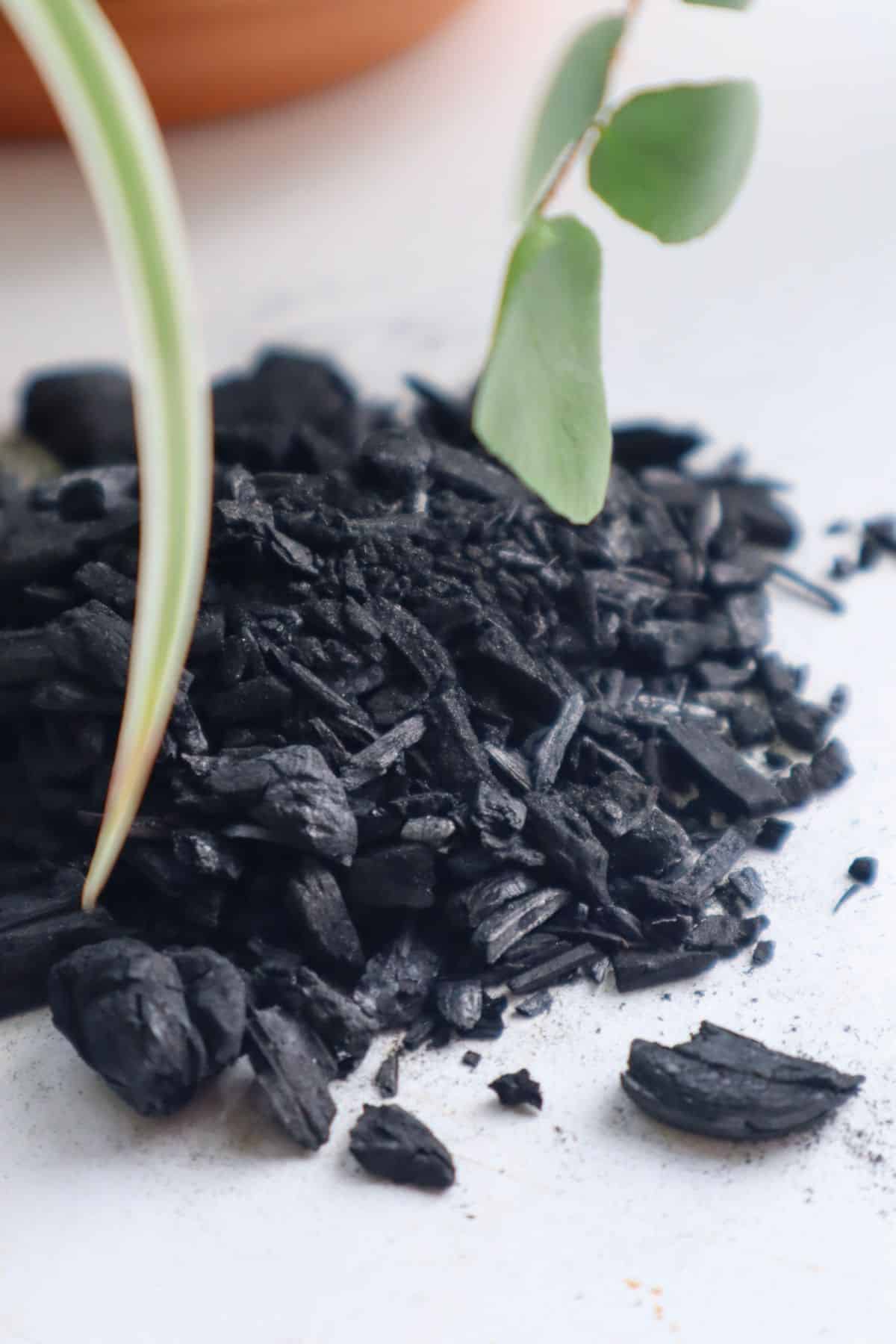
👉 See my guide to Terrarium Substrates for more options.
Compost
Both your plants and your cleanup crew need to feed on organic material in the substrate mix.
This is easily achieved by adding some form of compost.
Personally, I always recommend earthworm castings. They’re my go-to choice for natural, renewable compost, and they’re quite literally the waste from worms – which is exactly what isopods and the like would feed on in the wild.
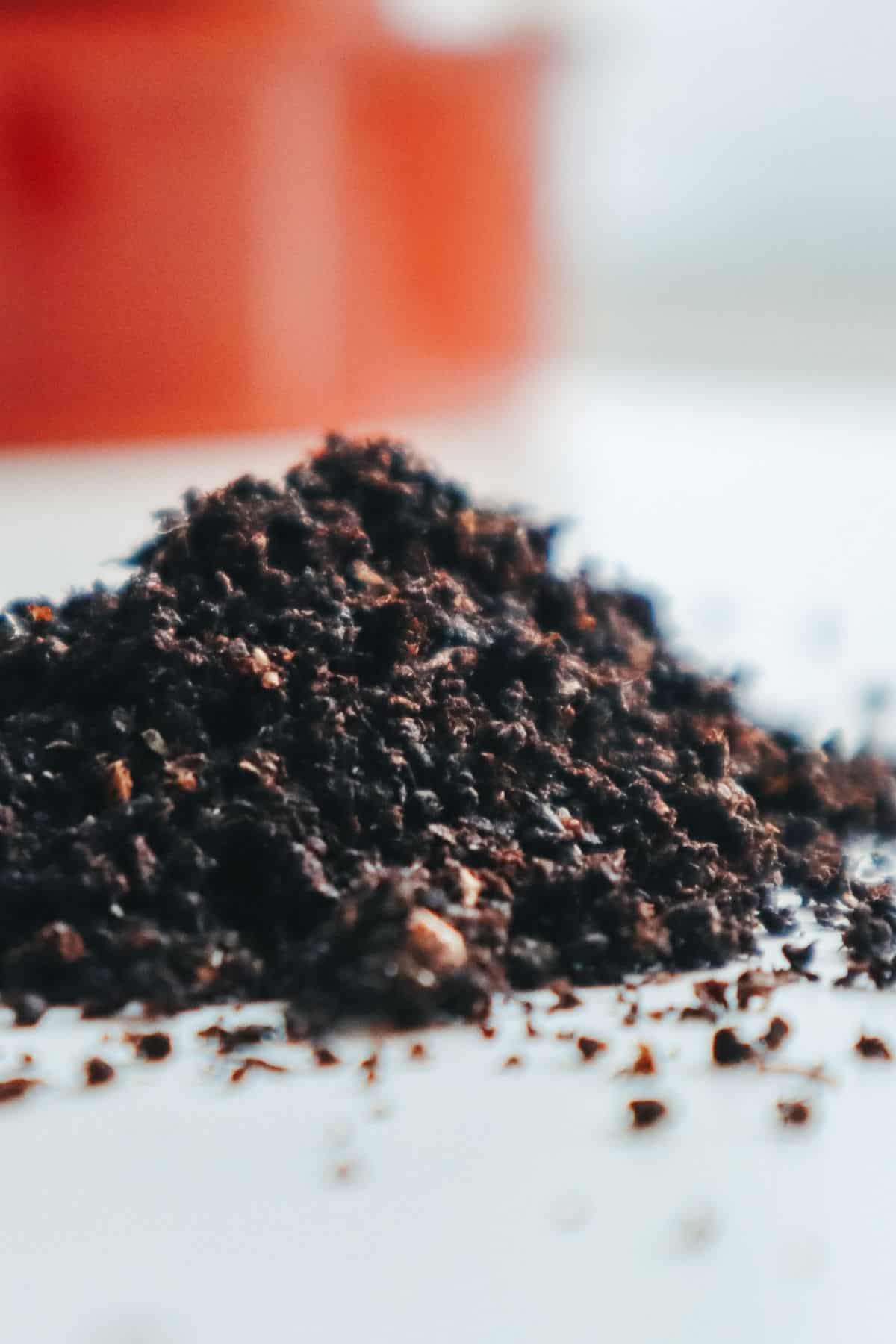

Topping
Leaf litter may not be common in smaller plant terrariums, but it’s an important part of bioactive vivarium substrate layers.
Microfauna (and animals if you have them) use leaf litter as hiding spots, but most importantly, it’s the slowly decomposing leaves that form the backbone of their nutrition.
This can just be sprinkled loosely on top, but it will need refreshing every now and again.
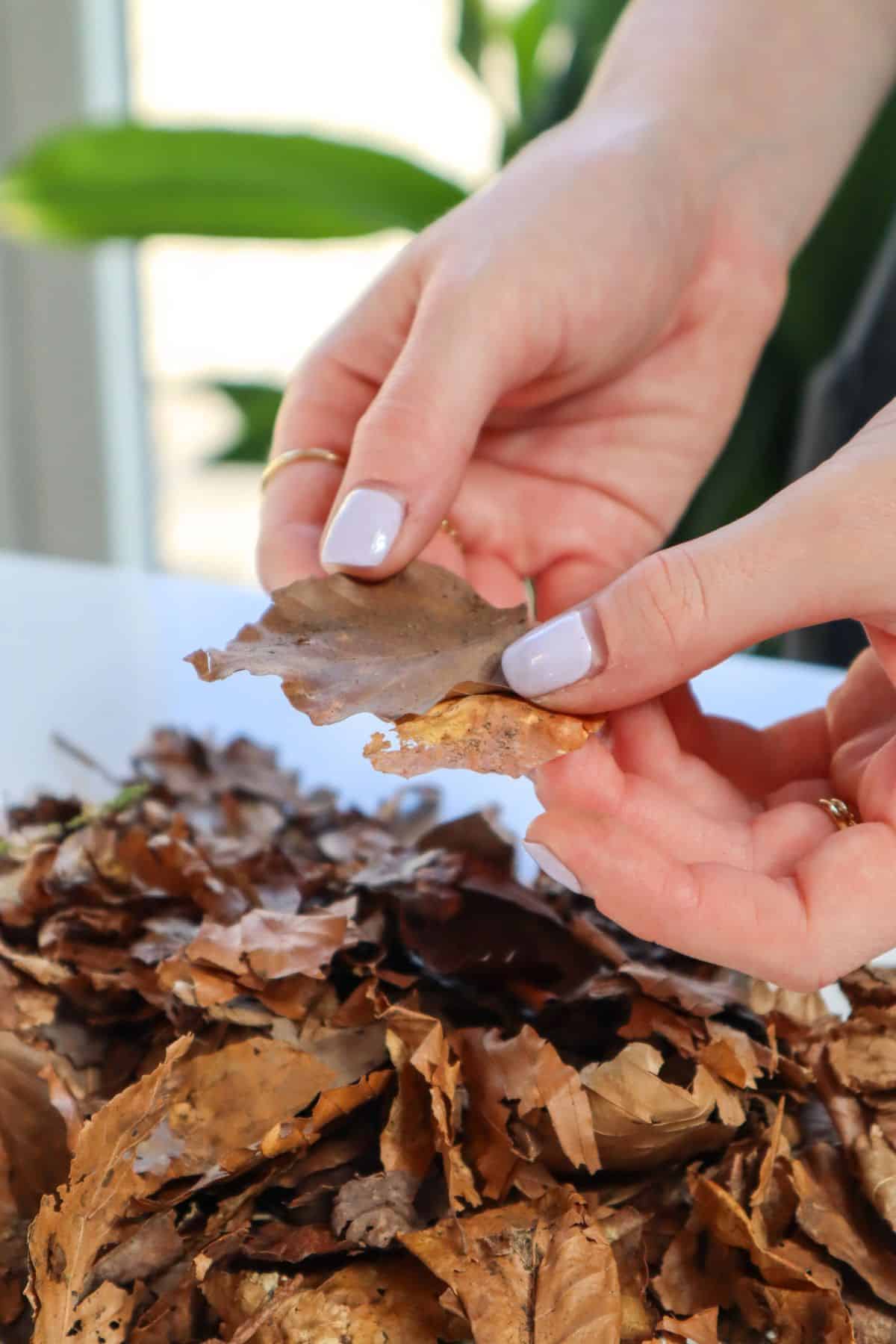
Soft driftwoods (like Cholla Wood) will also decompose in a humid tropical tank. So, these are great additional options to explore.
Honestly, they also look really cool too!
Tropical Bioactive Substrate Recipe
We’ve arrived at the moment you’ve been waiting for.
Though the “ideal” mix will always vary depending on your plants and the setup of your bioactive terrarium, a versatile tropical substrate recipe will do just fine in most projects.
Something like the tried-and-tested ABG mix is an excellent starting point.
Here’s the classic ABG substrate recipe:
- Sphagnum Moss – 1 part
- Tree Fern Fiber – 2 parts
- Orchid Bark – 2 parts
- Peat Moss – 1 part
- Charcoal – 1 part
👉 You can buy the classic ABG mix here on Etsy.
Personally, I prefer to use my own take on this recipe. Opting to use earthworm castings over peat moss (as it’s far more renewable) and adding coco coir.
What About an Arid Bioactive Substrate Mix?
For those who are keeping desert animals in an arid bioactive terrarium – you can still get in on the action!
You can still get an arid bioactive substrate recipe and an arid bioactive cleanup crew.
We’ll still be using (mostly) sand, but we also need some of the typical bioactive components. Pure sand won’t support much in the way of plants or microfauna, right?
From what I’ve seen recommended online, the recipe is a variation of a simple formula:
Sand + water retentive base + compost.
These are the materials I would use and their ratios.
- 2 parts horticultural sand.
- 1 part coco coir.
- 1 part earthworm castings.
Do You Need Different Bioactive Substrate Layers?
How you implement your new substrate will vary depending on your project and needs.
Really simple enclosures for small terrarium animals (say for isopods or tarantulas) can probably get away with just a single thick layer of the bioactive substrate.
You’re only meeting the needs of one type of organism, right?
Whereas more complex planted containers – the kind we’re really talking about – will likely need a few distinct vivarium substrate layers.
Firstly, to allow your substrate to drain freely, a drainage layer in a vivarium can be a big help. That way, you don’t get water pooling at the bottom, waterlogging your container.
This sits beneath the substrate, and it usually consists of leca or rocks (though rocks can get heavy).
This drainage layer is usually divided from the substrate layer by some sort of terrarium substrate mesh. Just to keep them from mixing and ruining the whole flow.

There You Have It!
Phew, things got a bit technical there for a while, but we’ve made it.
If you’ve stuck it out to the end, then you’re clearly a genius. Do you have any bioactive substrate tips that I’ve missed?
Let me know in the comments.

I presume some of the accounts I’ve read of closed terrariums remaining unopened for decades {fully functioning} do not have these isopods or springtails in them? Would a bioactive substrate consisting of microorganisms such as bacteria and fungi be enough to act as a sustainable environment? Even if the decomposition process is slower? I ask because I plan to make a closed terrarium for my mom and I know springtails and isopods would not be welcome and her cat may find them too intriguing.
Sure, those super old terrariums almost certainly don’t have isopods or springtails, so I can only assume its microorganisms doing all the heavy lifting. Much harder to get right though!
Thank you for that. I have to say, I really love your site and appreciate all of the information. I’m a pretty intense “researcher” when I get into a project and your site has been invaluable. Thank you for all of the effort you and your contributors put into this resource. Have a wonderful holiday season.
Thank you, very very very informative! I’m going to implement all of your recommendations, if not add some of my own… 😉